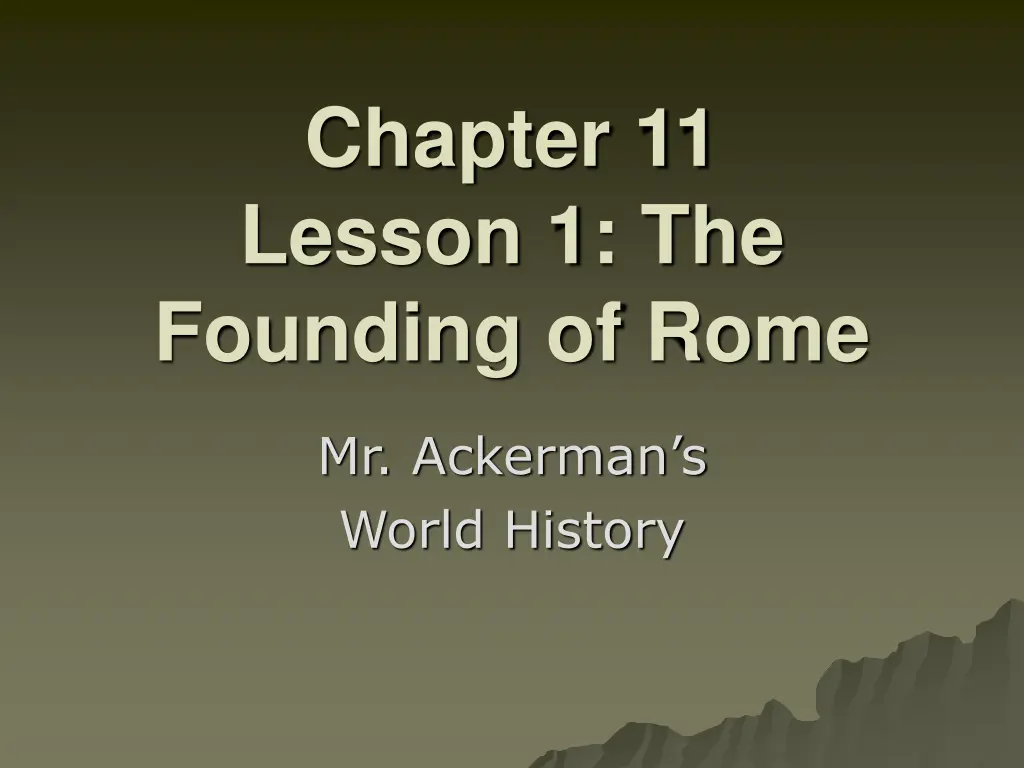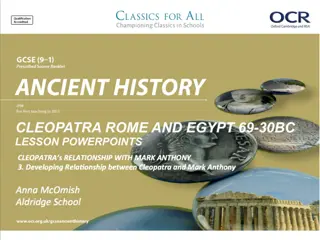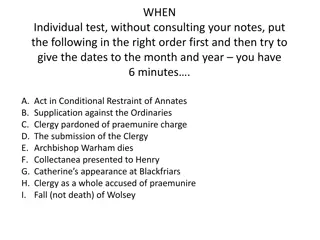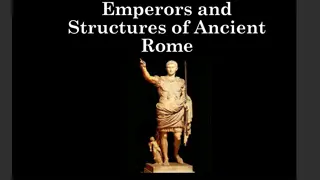
The History and Expansion of Ancient Rome
Explore the founding of Rome, its transition to a republic, and its vast expansion under ambitious generals. Discover the myths and legends surrounding its inception, the role of geography, and the remarkable Roman architecture that still influences modern design.
Download Presentation

Please find below an Image/Link to download the presentation.
The content on the website is provided AS IS for your information and personal use only. It may not be sold, licensed, or shared on other websites without obtaining consent from the author. If you encounter any issues during the download, it is possible that the publisher has removed the file from their server.
You are allowed to download the files provided on this website for personal or commercial use, subject to the condition that they are used lawfully. All files are the property of their respective owners.
The content on the website is provided AS IS for your information and personal use only. It may not be sold, licensed, or shared on other websites without obtaining consent from the author.
E N D
Presentation Transcript
Chapter 11 Lesson 1: The Founding of Rome Mr. Ackerman s World History
ESSENTIAL QUESTION How does geography influence the way people live? Guiding Questions What is the early history of Rome?
In the Beginning Ancient Rome begin as a group of villages along the Tiber River in what is now Italy. Around 750 B.C. these villages united to form the city of Rome.
Myths and Legends The history of ancient Rome begins with the overthrow of foreign kings in 509 B.C. But Romans like to date the history of their city to 753 B.C. That is when a legendary hero called Romulus (RAHM yuh luhs) is said to have founded Rome.
What are legends? A legend is a popular story from earlier times that cannot be proved. The legend about Rome's founding begins with Aeneas (ih NEE uhs), a hero of the Trojan War. According to the legend, Aeneas settled in Italy after Troy was destroyed.
Formation of Roman Republic For more than 200 years, kings ruled Rome. In 509 B.C. Rome became a republic. The Roman Senate was an assembly of elected representatives. It was the single most powerful ruling body of the Roman Republic.
Roman Expansion Under the leadership of ambitious generals, Rome s highly trained soldiers took over most of the land surrounding the Mediterranean. The ancient Romans called the Mediterranean mare nostrum, meaning our sea .
Fun Facts About Rome One of the things the Romans are most famous for is their architecture. The Romans brought a lot of new ideas to architecture, of which the three most important are the arch, the baked brick, and the use of cement and concrete. Roman architecture inspired the design of the U.S. Capitol building!
Fun Facts About Rome The Romans built thousands of miles of road to connect the entire empire. These roads were used up until about 100 years ago when technology advanced!
Fun Facts About Rome The Romans were the first to build aqueducts. The running water, indoor plumbing and sewer system carrying away disease from the population within the Empire wasn't surpassed in capability until very modern times.
Fun Facts About Rome In the times of Ancient Rome very few people had baths in their homes. Adults enjoyed going to the public bathhouse. Children were not allowed in. The bathhouse cost very little to get in, so people used them often. The men and the women both used the bathhouse, but at different times during the day. Each group had a scheduled time, although the women's scheduled time was shorter. Bath houses were huge and housed much more than pools. Exercise grounds, gymnastic apparatus, courts for games, libraries, rooms for reading and conversation--all these things could be found in the Roman bath house. The people made a point of going to the bath to meet their friends and associates.
Fun Facts About Rome The Romans didn't use soap. They cleaned themselves by covering their bodies with oil. Then they scraped the oil off with a special scraper called a strigil. Strigils were make from bone or metal. Next the Romans enjoyed several pools. Each of these pools had water heated to different temperatures. Bathers went from one bath to another. Caldarium, tepidarium, frigidarium Ancient Rome had as many as 900 public baths. Small baths held about 300 people. The largest bath held 1500 people. Bathhouses were built all over the Roman Empire. The most impressive ones were found in the city of Rome. They were decorated with marble and statues.






















